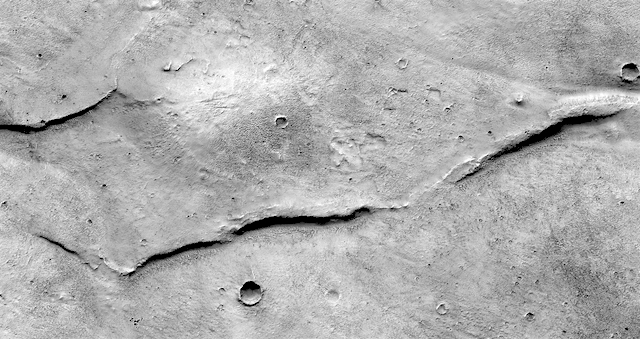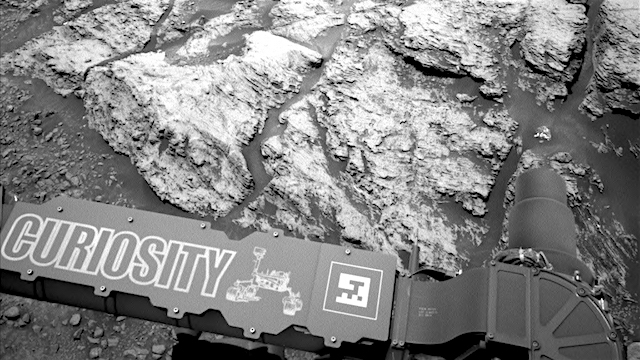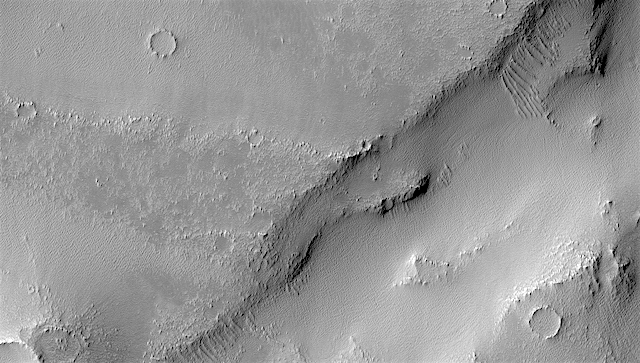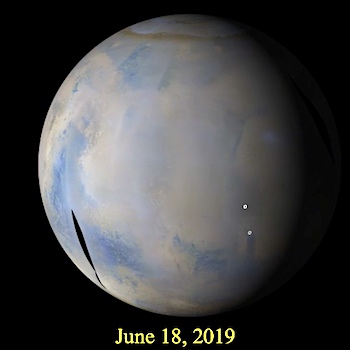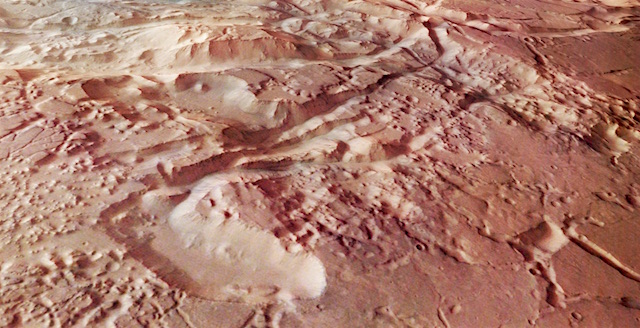 The cracked, uneven, jumbled landscape seen in this image from ESA’s Mars Express forms an intriguing type of terrain that cannot be found on Earth: chaotic terrain.
The cracked, uneven, jumbled landscape seen in this image from ESA’s Mars Express forms an intriguing type of terrain that cannot be found on Earth: chaotic terrain.
The feature visible here, Aurorae Chaos, is located in the ancient and equatorial Margaritifer Terra region of Mars. The terrain here is heavily cratered, and shows signs of myriad fascinating features – many of which are thought to be linked to past water activity.
These images show the southern part of Aurorae Chaos in detail, highlighting various swathes of fractured rock, mismatched peaks, flat-topped mounds (mesas), scarps, jumbled cliffs, and eroded craters.
These characteristic features sweep across the surface, and connect to a number of small outflow channels that spread into this image from beyond the top of the frame in the main colour image. These channels form the eastern end of one of Mars’ most famous features – a giant valley system called Valles Marineris, which cuts deep into the surface and spans thousands of kilometres… [More at link]









